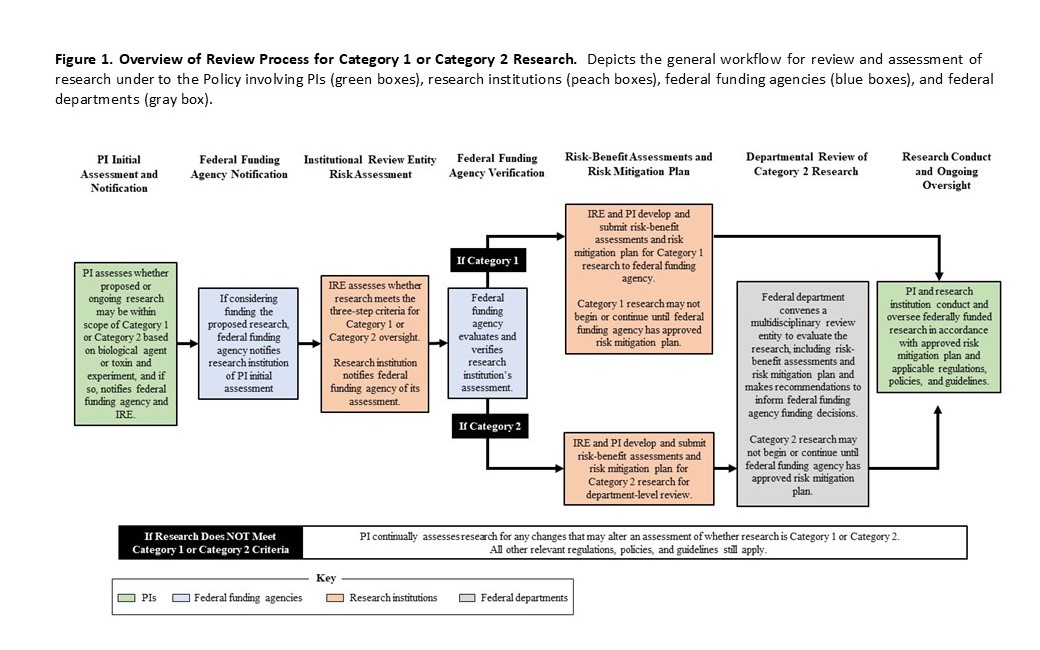Last Revised: February 24, 2025
Dual Use Research of Concern (DURC) is life sciences research that, based on current understanding, can be reasonably anticipated to provide knowledge, information, products, or technologies that could be directly misapplied to pose a significant threat with broad potential consequences. These consequences could affect public health and safety, agricultural crops and other plants, animals, the environment, material, or national security.
Pathogen with enhanced pandemic potential (PEPP) is a type of pathogen with pandemic potential (PPP) resulting from experiments that enhance a pathogen’s transmissibility or virulence, or disrupt the effectiveness of pre-existing immunity, regardless of its progenitor agent, such that it may pose a significant threat to public health, the capacity of health systems to function, or national security. Wild-type pathogens that are circulating in or have been recovered from nature are not PEPPs but may be considered PPPs because of their pandemic potential.
On May 6, 2024, a new policy and implementation guidance for research involving DURC-PEPP was released and will supersede previous DURC policies and the 2017 Enhanced Potential Pandemic Pathogens Framework (P3CO).

NEW POLICY
The US Government policy for oversight of Dual Use Research of concern and PEPP goes into effect May 2025. This policy addresses the evolving landscape of biological research ensuring that scientific advancements do not inadvertently contribute to threats against public health, national security, or the environment.
This policy lists over 90 pathogens and toxins, 9 categories of experiments and identifies 2 categories of research that must be proactively assessed by the PI when submitting a federal grant application or the annual research performance progress reports (RPPRs).
- List of Category 1 Agents and Toxins
- List of Experimental Outcomes and Examples for Category 1 are found: p9-12
- List of Experimental Outcomes and Examples for Category 2 are found: p 12-21